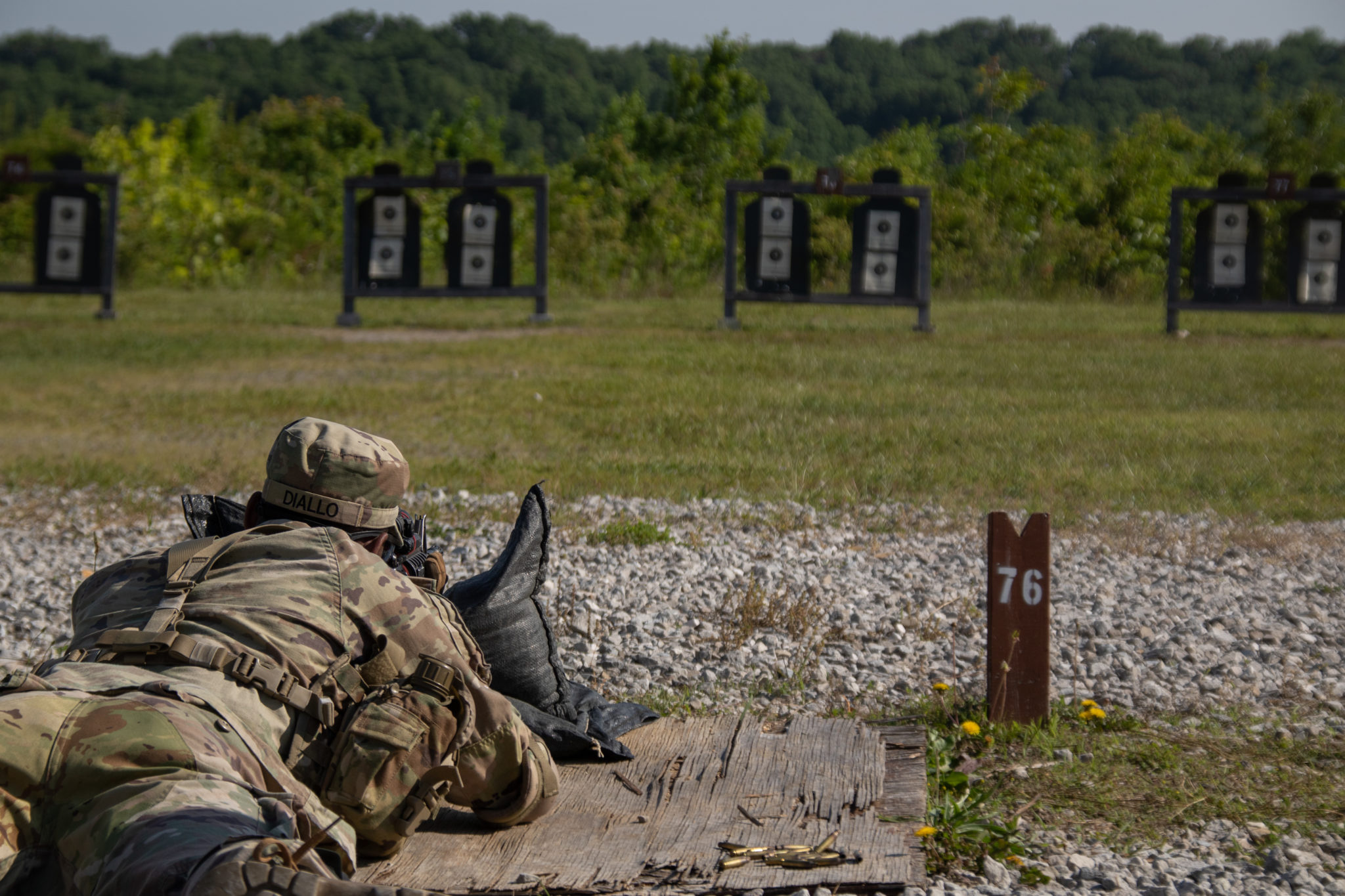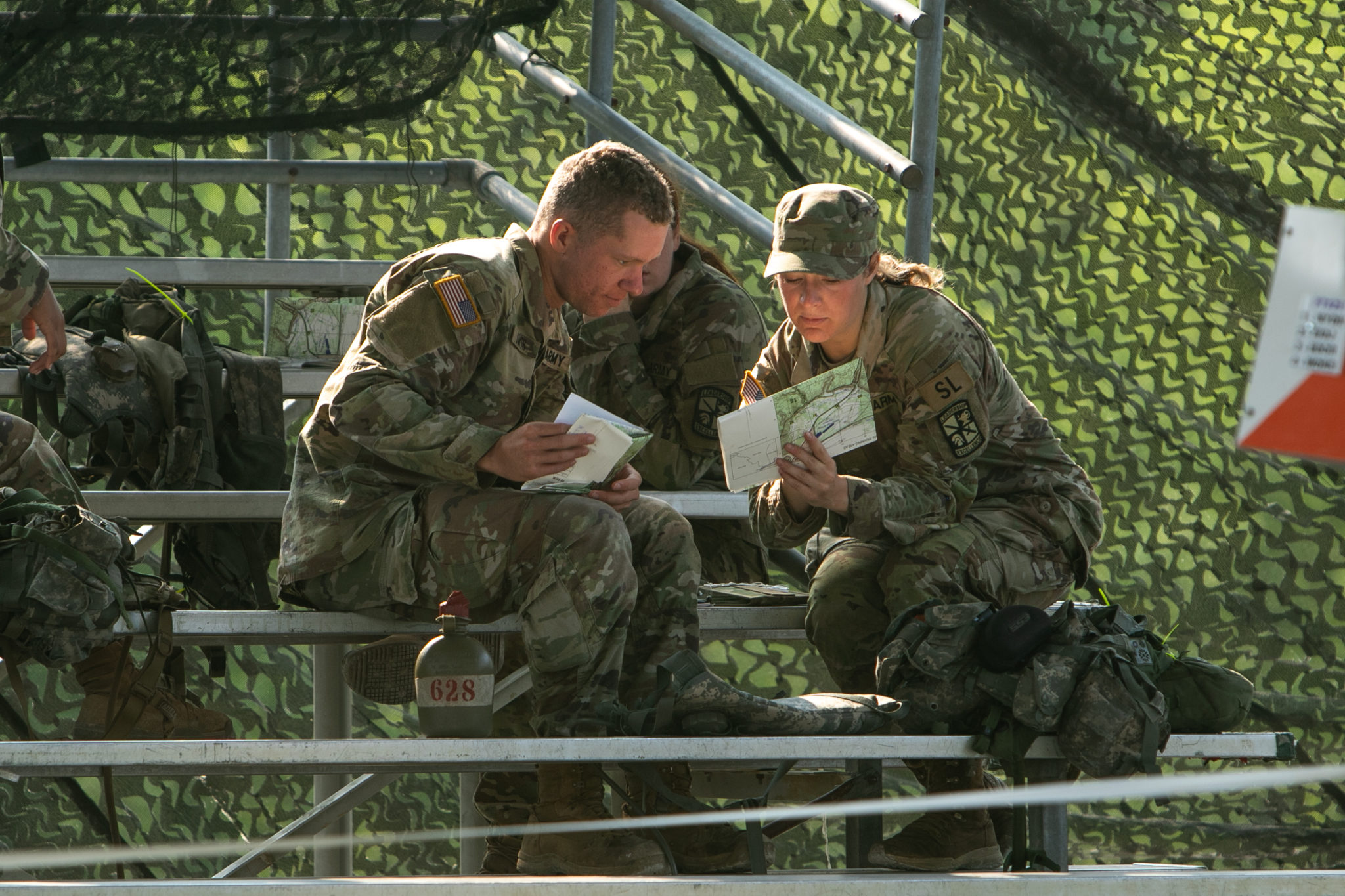By: Madison Thompson
FORT KNOX, Ky. – The First Regiment Cadets, Advanced Camp, completed the Chemical Biological Radiological Nuclear, CBRN, training on June 2 during Cadet Summer Training, CST.
CBRN is training where the Cadets are exposed to Corson Stoughton, CS, gas. CS gas, commonly known as tear gas, causes certain symptoms such as runny nose, watery eyes, some difficulty breathing and, in some extreme cases, vomiting. This training is required by all Soldiers of the Army.
“The CS chamber is a basic level task that every Soldier has to conduct in the Army. It’s the same as taking a PT test or firing your weapon. It’s there so that you can go inside of the chamber, place your mask on, place your protective equipment on and build confidence that your equipment is doing what it’s supposed to,” explained 2nd Lt. Andrew Friesen. “That way, if you ever get in a situation where you’re going to have to use that equipment with an agent that can cause you harm, you have the confidence that the protective gear is going to do its job and you can continue to function.”

1st Regiment, Advanced Camp Chemical Biological Radiological Nuclear Chamber
Photo by Nicholas Bafia
A CBRN environment can be dangerous, which is why Cadets are being trained in a controlled environment.
“We’re learning how to respond to a chemical environment … We’re learning how to quickly put on our equipment that will help us be able to survive that sort of environment,” said Cadet Richard Phillips, Duke University, from Kalamazoo, Michigan.
The training Cadets will face in the future is different than CBRN and the CS chamber.
“A lot of the other training the Cadets are going to go through is generalized, leadership style training. I know a lot of the other is going to be focused on how to be a lieutenant, a platoon leader, a leader. This is going to be specific on how to be a CBRN leader and how to conduct CBRN operations,” stated Friesen.
Cadets are also aware that CBRN training is different than what they are accustomed too.
“This is actually pretty different. A lot of our other training is tactical. That’s a lot of what we’ve been learning during the school year at our programs. This is something we never got an opportunity to see before. So, we’re learning it all now and getting tested on it. It’s a good exercise for getting us to learn things quickly,” said Phillips.
To pass this point in training, Cadets must be able to place on their protective masks in nine seconds. They must also be able to put on their body suit in eight minutes.
Before going into the chamber, some Cadets were optimistic about going into the CS chamber.
“I’m kind of excited. I’m not one to shy away from different things. I think it’ll hurt probably but I’m just going to go for it and see what happens,” said Phillips.
Cadre also looked at their training and thought about advice for Cadets.
“They need to stay calm. It’s not going to harm you. It’s not going to cause permanent damage in any way. It’s just a stimulant, really. What they need to do is just break their seal, put it back on, and learn confidence in that mask as well as the equipment that they’re wearing that’s going to protect them,” said Sgt. Hunter Borash.
The learning objective of this event during CST was to trust the equipment. In the event of a CBRN situation, Cadets need to know that the protective gear does work and can save them from chemical environments.

Cadet Gordon NuDelman, University of Utah, Biebelsheim, Germany, holds his protective gear after going through the gas chamber during chemical training at Fort Knox, Ky., on June 2, 2017.
Photo by Nicholas Bafia
Cadets entered the chamber and performed a series of tasks.
“Inside the chamber, we tested the equipment and showed the trust that a solider should have in all their equipment and it does work. When you have the mask on, you can’t feel anything wrong with you and immediately when you take it off you can’t really breathe or talk and you just start snotting everywhere,” stated Cadet Brennan Egan, University of Arizona, from Phoenix, Arizona.
Once the masks were off, Cadets were led out of the room and instructed to blink, flap their arms to clear the residual gas from their gear, and avoid touching their face. Touching their face after being exposed to CS would result in aggravating the area further, making their skin burn longer.
“It felt like somebody shoved Tabasco in me like an IV through my nose, so that was fun. It cleared me out, so I feel pretty good now,” said Egan.
Other Cadets had other experiences.
“I felt aware because I’ve already done this before, but still weary I guess. It was more painful than I remembered, but in the end I’m okay and I’m awake. I was very tired, and now I’m very awake,” stated Cadet Gordon NuDelman, University of Utah, from Biebelsheim, Germany.
After they were finished in the CS chamber, Cadets cleaned out their equipment, concluding their CBRN training.
Cadet Summer Training will bring 8,200 Cadets through Basic and Advanced Camp this summer on Fort Knox. These camps are designed to help challenge, grow and improve various skills and leadership qualities within the Cadets. If you think you have what it takes to be a Cadet or if you are interested in a job after college click the following link: https://my.goarmy.com/info/rotc1/index.jsp?iom=IP08-AUTO-R1NA-BR-XXX-XX-XXX-MO-XX-X-BRCMAC:IP08




